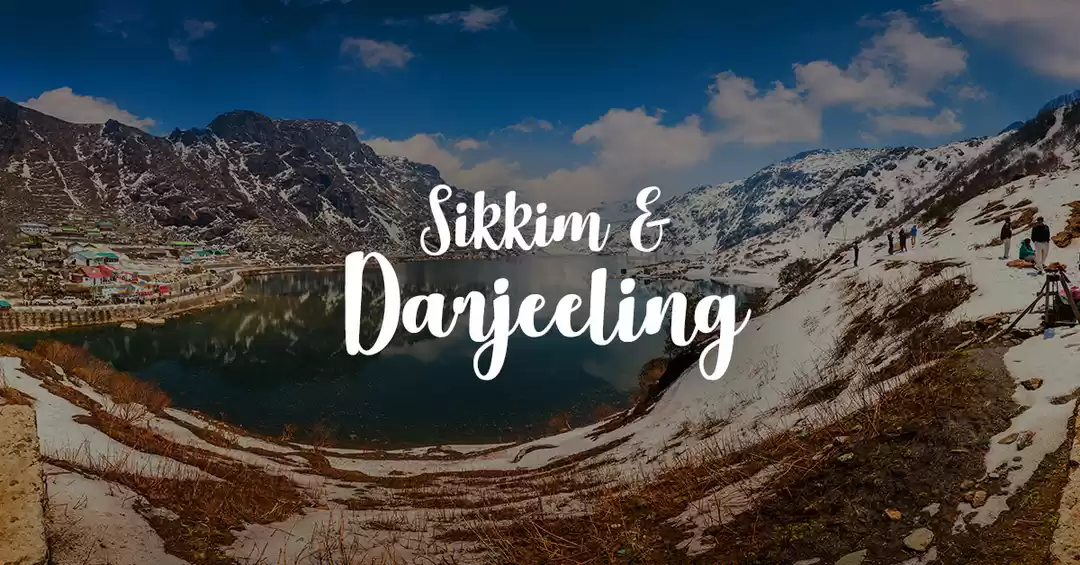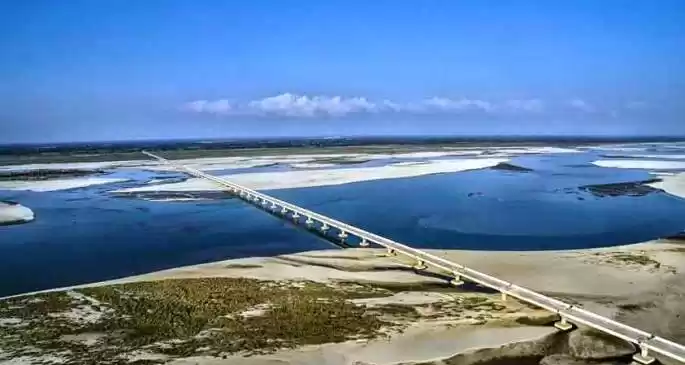
Our father was in Forest Service from Arunachal Pradesh cadre (called North East Frontier Agency then). I grew up in Arunachal in early childhood years. Yet, due to lack of connectivity and infrastructure we did not see many parts of the state which are tourism spots now. Parshuram Kund is one such beautiful place with a mythological story associated to Parashurama, the sixth incarnation of Vishnu. This place was difficult to access till few years back. In early eighties father was posted in Roing, a town near Parshuram Kund. When he fell sick and was in comma, it took a week before we got to know in our native village in Assam and it took our mother another two day's journey involving perilous boat ride to cross mighty Brahmaputra River to reach him. Now with Dr Bhupen Hazarika Setu, Bogibeel bridge and other bridges over Brahmaputra and its tributaries both in Assam and Arunachal, scenario has changed drastically. In March, 2021 we were in Jorhat and after first wave of Covid we were almost desperate to take a trip. So, during an extended weekend due to Holi falling on Monday, we set out for long awaited trip to Parshuram Kund.
We started early morning on Saturday, 27th March 2021 and reached Tinsukia at around nine thirty am. My friend and ONGC batch mate Ruposhri's hometown is Tinsukia and on learning about our trip she invited us to their home. At that time, she was also posted in Jorhat and that weekend she was home. It was a delightful reunion with all the family members. After a lavish brunch prepared and served with much love, we resumed our journey through places I visited long back. The route was scenic with verdant green tea estates by the road side. We crossed the Dr Bhupen Hazarika Setu (9.15 km) connecting Dhola and Sadiya. Sadiya is a historical town and was capital of Chutia kingdom, one ethnic group inhabiting the North East, before it was conquered by the Ahoms. The famous temple dedicated to Kechaikhati, a primordial female tribal deity built by Chutia kings is there in Sadiya. There is a famous flower Satphul in Sadiya which I have only heard about.



We crossed over to Arunachal at around two pm. Entering the pretty little township of Roing, we headed straight to Sally Lake which is enroute to Mayodia Pass, a tiny gateway to Indo-China border. It is a beautiful mountain lake with a walkway surrounding it which makes it very enjoyable. Then we came back to Roing town area. Seeing a football match going on in a pretty field we stopped to enjoy it. In the market area we had a cup of tea in a pleasant restaurant and explored the local market. There seeing some pretty young girls with beautiful umbrellas, I also bought one.





Then we headed for Golden Pagoda, one of the largest Buddhist monasteries in Northeast India that was opened in 2010. It is situated in Chongkham village of Namsai district of Arunachal Pradesh. On the way we visited archaeological site Bhismaknagar fort built by Chutia Kings during 8th to 10th Century. It is believed in this part of India that Rukmini, the chief consort of Lord Krishna belonged to Idu Mishmi tribal community and was from Bhismaknagar. We crossed a bridge at Alubari over river Lohit and fortunately could witness sunset from bridge.


We reached Golden Pagoda in the evening hours and it was a majestic sight glowing in the darkness. The splendid golden pagoda built in the Thai/Burmese style sits amidst a beautiful landscaped 20 hectre garden surrounded by lush greenery and exudes peace and serenity. Within the golden pagoda is housed a beautiful gilded statue of Buddha which is modelled on the kala Buddha of Nalanda archive. The complex also houses a centre for cultural research of the Tai Khampti-singpho tribes, a library and a monastery. Afterwards we retired for the night at the well-appointed suit of the adjacent resort.


Early next morning we went back to Alubari bridge and witnessed a glorious sunrise. Then we went to have look of Chongkham village. It is perhaps the prettiest village I have ever seen. We visited World Peace Pagoda with a statue of Buddha in meditation underneath a tree. We also had a view of our resort in day light.




After breakfast we checked out from the resort to go to Parashuram Kund. It took us around two hours to reach there. There are around three hundred steps to the Kund which needs to be climbed up for almost half the distance and then climbing down. Steps are steep and can be challenging for bad knees. The sight is enthralling. It is believed that Parashurama beheaded his mother Renuka with his axe on the orders of his father Rishi Jamadagni. The axe got stuck to his hand since he had committed the heinous crime of matricide. When his father pleased with his obedience decided to give him a boon, Parashuram asked for his mother to be restored back to life. Even after his mother was brought back to life the axe could not be removed from his hand. He repented for his crime and on the advice of eminent rishis of that time, he arrived at the banks of Lohit River to wash his hands in its pure waters. It is said as soon as he dipped his hands into the waters the axe immediately got detached cleansing him of all the sins. Since then the site where he washed his hands became a place of worship and came to be known as Parshuram Kund. There are many stories varying from region to region in India that describe the above incident and there are numerous temples dedicated to Parashurama most of which are in Kerala. Many pilgrims visit the place in winter every year, especially on the Makar Sankranti day for a holy dip in the sacred Kund which is believed to wash away one's sins.




We went back to Roing though a different route via Tezu taking a mountain road. In Tezu we had a lunch of Thukpa and Momo at a local restaurant. On the way we dropped in at Digaru Eco Resort where they let you dine in a rivulet. I just sat there for a few minutes and it was so relaxing to feel the water caressing my feet.



In Roing we went to a resort in a very beautiful location amidst orange orchard. However, we could not book it in advance and after landing up there saw it was closed. So, we went to a Homestay instead. It was a cute cottage lovingly decked up by the owner who is a young guy called Mito and is very pleasant and hospitable. Waking up next morning in the homestay we could see the sunrise through the bedroom window over our morning cup of tea.



Taking leave from Mito we started off early passing through Dambuk, the orange valley though season of orange was over though available on roadside stalls. Had breakfast at Pasighat, the oldest town of Arunachal Pradesh, where my father was posted but I could not visit at that time. This time also we did not have time to explore the town and just passed through before proceeding to visit Malinithan. This is a temple as well as an archaeological site. It is said Krishna and Rukmini stopped here while travelling to Dwarka and were hosted by Shiva and Parvati who were doing penance. Parvati presented them a garland of flowers from her garden. Krishna was very pleased and addressed her as Malini. There is a view point at the top which was closed due to renovation work.


Resumed our journey and crossed Bogibeel bridge connecting Dhemaji and Dibrugarh to reach Dibrugarh. Thus, my wish to see both the prominent bridges over Brahmaputra was fulfilled. These bridges have made the lives much easier for people of this area. I was so happy to see the developments. We had a lunch of Assamese thali at Kareng Dhaba at Moran and reached our Jorhat residence in the afternoon with joyous hearts.




























